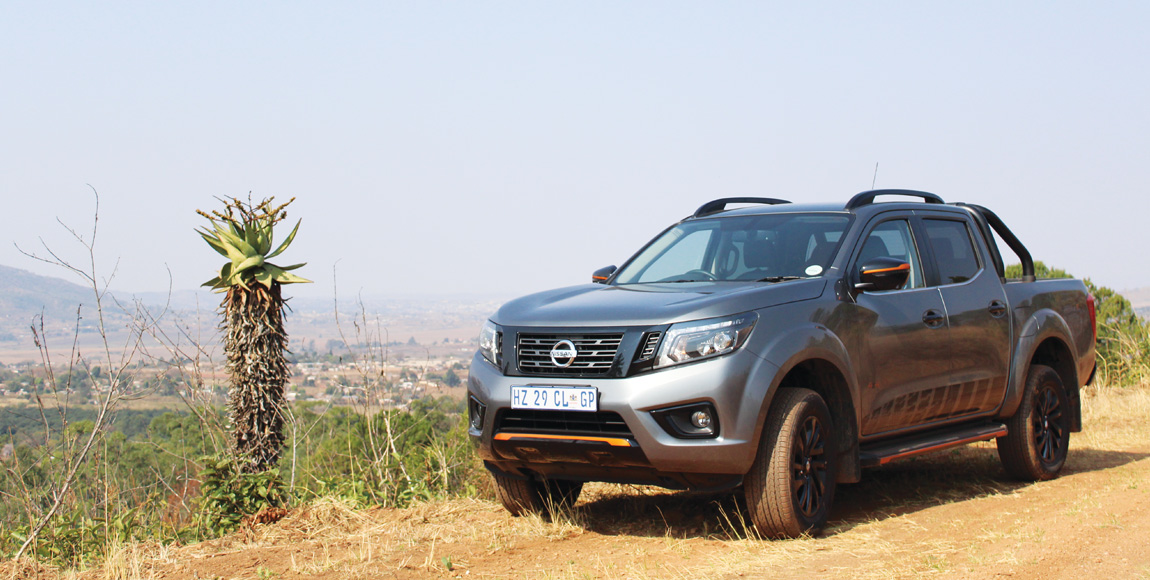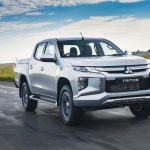Stylish off roading with the Nissan Navara Stealth

With similar features to those of the Nissan Navara LE, it really is the styling that sets the top-of-the-range Navara Stealth apart. MARISKA MORRIS finds out if the new trims make a difference
The Navara range is the latest collection of double-cab bakkies on offer from Nissan. Starting at R489 700, the line-up includes 4×2 and 4×4 derivatives in SE, LE or Stealth guise, with automatic gearbox options available for all but entry-level variants.
The most affordable Navara, the SE includes features such as a reverse camera, six-speed manual transmission and a braked towing capacity of 3,5 t. Upgrading to a model in the LE range means even more features – among them hill-start assist, hill-descent control, reverse-parking sensors and roof rails.
The top-of-the-range Navara Stealth doesn’t offer more gadgets, instead its appeal lies in its unique styling option. The model is available in three colours – white, black or grey – of which I find the latter best complements the orange accents on the grille, mirrors and side step. Additionally, the flanks and rear of the Stealth incorporate distinctive graphics to further set the model apart.
Door handles, roof rails, bumpers and tailgate handle are black as opposed to traditional silver. The model
also features a tubular sports bar to promote its off-road-ready appeal. Inside, orange accents are carried through to the leather-and-fabric combination sports seats and trim.
The Stealth seems to find a good balance between the rugged, off-road appeal favoured by many outdoor bakkie adventurers and the more urbane look that’s suited to city night life. It appears to be equally at home in the bush and in the concrete jungle.
So, is the Stealth worth it? Well, that depends. For many buyers, the most important aspects of a vehicle are performance, price and appearance – usually in that order. The Stealth does not compromise on performance; its turbocharged, four-cylinder, diesel-fed engine – which produces 140 kW – ensures the vehicle has more than enough power.
With the seven-speed auto transmission, the vehicle is always operating in its optimal gear, which translates into good fuel consumption for a vehicle of its size. During my test drive of the Stealth, which took me to Eswatini (formerly Swaziland), fuel economy averaged 7,8 lƖitres per 100 km – this, of course, before any off-roading took place.
The cruise-control feature on the 4×4 automatic model further helps fuel economy and makes travelling longer distances a pleasure. Hill-start assist and hill-descent control were put to the test on a 4×4 route in the Mlilwane Wildlife Sanctuary.
The Stealth climbed even the steepest of hills with minimal effort, while on descents the hill-descent technology kept the vehicle at a slow and steady pace with no braking required – it was simply a matter of pointing the nose in the right direction. This made manoeuvring on difficult, rocky terrain much easier – especially for an amateur.
Despite its size, the Stealth is just as easy to manoeuvre in the city with the sensors and cameras that provide the driver with greater visibility around the vehicle.
I believe the only thing to consider is whether the Stealth’s more expensive price tag justifies the unique design. The Navara LE 4×4 automatic’s starting price is R650 700, compared with the Stealth’s R663 200. Considering this meagre price difference between the Stealth and its peer, it all comes down to taste.
Personally, the pop of orange on the metallic pearl grey, orange stitching on the seats and sports bar make all the difference to the design. With it, one can seamlessly transition between the office, an off-road adventure and city night life.
Published by
Mariska Morris
focusmagsa




